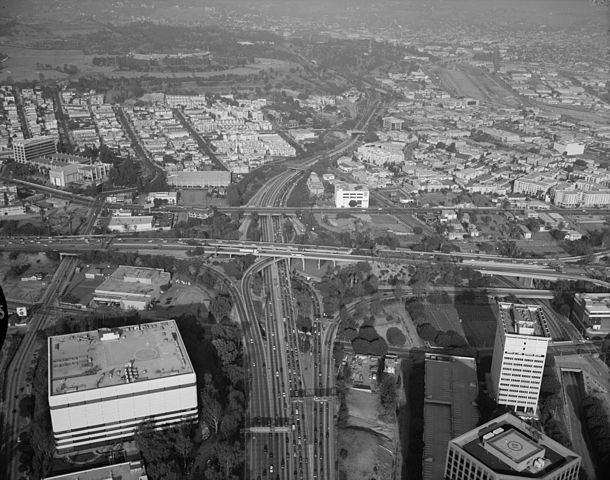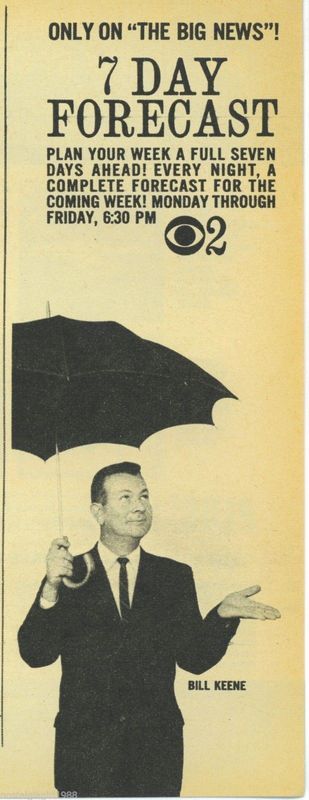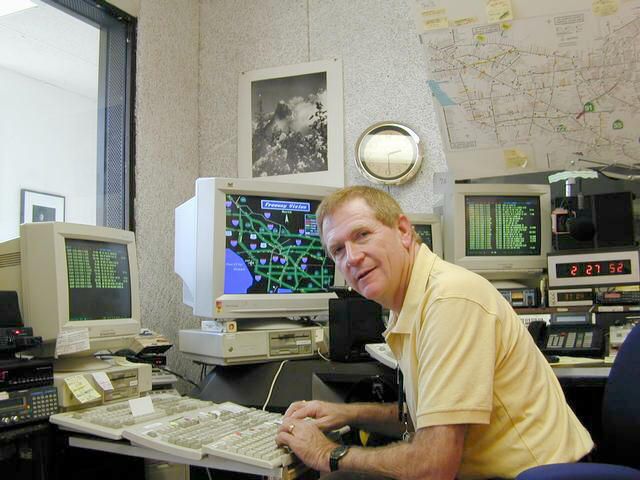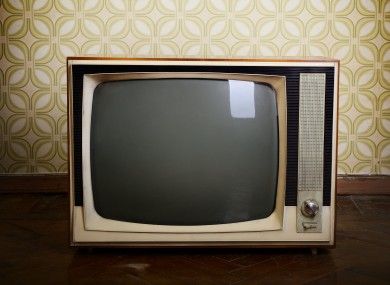DRIVING DOWN CENTURY BOULEVARD - Driving down the boulevard amid the towering hotels leading into Los Angeles International Airport suddenly figuring out what lane you need to be in for arrivals or departures sometimes you are held up by airport police checks, and when that happens hopefully you are not running late for your flight. It is said, "everything changed after 9/11," and with that includes posting police officers in airport entrances for random security checks. However, well before the obscene events of September 11, 2001, threats and terror attacks on airports were, unfortunately, nothing too new.
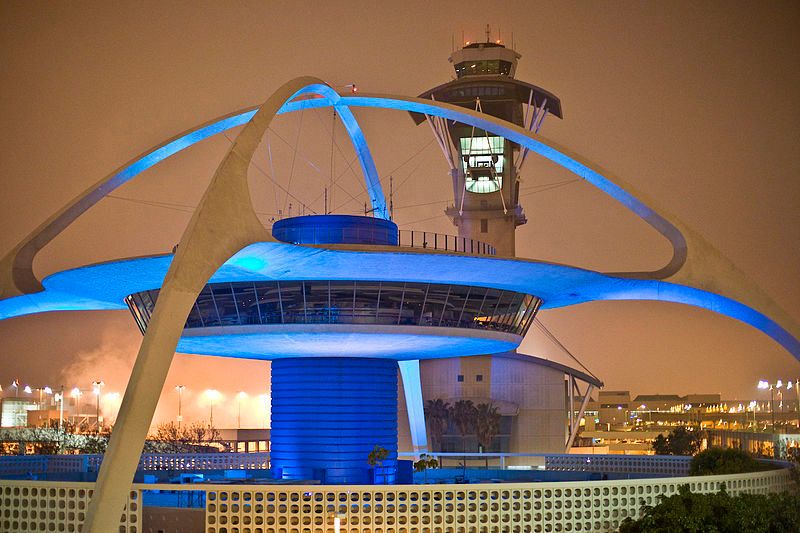
The iconic Theme Building at LAX. Photograph used under Creative Commons license.
On August 6, 1974, the most deadliest terrorist attack in Los Angeles since the 1910 Los Angeles Times bombing occurred at LAX, which resulted in the death of three people and dozens injured. In fact, it was, at the time, the worst terrorist attack at an American airport.
The 1970s was an overall turbulent era in America, and adding to the turbulence were many nationalist and domestic groups setting off various bombs around the country for mostly political reasons. New York seemed to be the center of these domestic terrorist attacks with many bombs set off in office buildings around Manhattan damaging buildings. San Francisco and the Bay Area also experienced dozens of bombings during this time. L.A. had been mostly spared from these political terrorist attacks.
Today, when a pipe bomb or even simply the threat of a terror attack occurs it causes great fear and panic around the country. Back then in the 1970s, frankly, much like how the British shrugged off IRA attacks, domestic bombings, hijackings and other such terror attacks in the United States were almost accepted as a "normal" way of life in 1970s America.
What Happened?
The 1974 LAX bombing was, at the time, the most destructive, deadliest bombing to ever hit a U.S. airport. The bomb was set off at the Pan American World Airways (Pam Am) terminal about 20 feet from the Pam Am check-in counter. Three people were killed and 36 people were injured.
According to the United Press International news report of the event,
Michael Strong of the police airport detail said he was about 100 yards away when "a tremendous blast shook the area and it was a scene of utter devastation. People were down on the floor crying for help. Bodies were blown all over the lobby. "All I could see was blood. There was blood everywhere," said skycap Gary Cartwright.
Police and federal agents tried to determine the origin of the blast. Investigators said the force indicated an explosive charge equal to about eight pounds of dynamite.
The Damage
The bomb tore out sections of a concrete wall behind the lockers, hurled some of the lockers through the lobby, ripped into the ceiling shredded baggage and blew out the glass from of the terminal.
The Alphabet Bomber
The suspect behind the LAX bombing was a Yugoslavian immigrant named Muharem Kurbegovic who claimed to be the leader of Aliens of America. The bomber was dubbed "The Alphabet Bomber" after he dropped off an audiotape at KNXT- TV (now KCBS-TV) following the LAX attack. The audiotape said in part, "The first bomb was marked with the letter A, which stands for airport [...] The second bomb will be associated with the letter L, etc., until our name has been written on the face of this nation in blood."
The second bomb was found inside a locker at the downtown L.A. Greyhound station, which, according to the Los Angeles Police Bomb Squad, was, at the time, the most powerful explosive device they ever handled and defused.
Prior Alphabet Bomber Attacks Before The LAX Bombing
About year before setting off the bomb at the Pam Am terminal The Alphabet Bomber set off firebombs at the homes of two Los Angeles Police commissioners and a judge. Furthermore, Kurbegovic burnt down two Marina Del Rey apartment buildings.
Hoax Attacks On The U.S. Supreme Court Justices
The first public movements concerning The Alphabet Bomber was an audiotape sent to the L.A. Times on July 7, 1974, with Kurbegovic claiming he put nerve gas on tiny lead disks hidden under stamps on postcards mailed that June to all nine justices of the U.S. Supreme Court. As Kurbegovic explained on the tape, "Each postcard shows the Palm Springs home of entertainer Bob Hope and reads as follows: ‘It is justices of your greatness that made this nation so great. Respectfully, Bob Hope’."
The postcards never made it to Supreme Court, and in fact, they never made it out of Southern California, because the nine postcards had been intercepted at the Palm Springs Post Office on June 16, where the canceling machines had broken the tiny vials under the stamps. The postal worker at the Palm Springs Post Office thought they were toy caps.
Turns out the nerve gas was not real as Kurbegovich admitted a few weeks later, in another threatening tape to the L.A. Times, the postcards were a hoax and the liquid in the vials was harmless. In this audiotape Kurbegovich said, “A reasonable man will pause to think if someone points a gun at him whether the gun is loaded or empty."
Note On Public Warnings About 1970s Domestic Terrorist Attacks
It may seem strange for terrorists to call into media outlets and to buildings that were being targeted warning them about an impending terror attacks, but however, in the 1970s many groups behind bombings often telephoned or mailed notices of upcoming terrorists attacks. Certain groups, like The Weather Underground, did this to prevent mass causalities. Leaving messages, be it an audiotape or letter, in seemingly random locations, like a restaurant or telephone booth, was typically the mode of operation for many 1970s domestic terrorists.
Why Did The Alphabet Bomber Do All This?
It is believed this terrorist committed these acts because judges and commissioners prevented him from opening his own taxi dance hall. A taxi dance hall is where a person can pay a woman to dance with you. Kurbegovic, it turns out, was caught in a taxi dance hall doing a lewd act, which led to his arrest. Kurbegovich believed that arrest would prevent his chances to open his own taxi dance hall business, and threatened his chances of becoming an American citizen.
So, Just What Was The Alphabet Bomber's Main Demand?
Well, simply put, Kurbegovic's main demands of his campaign of terror was to bring an end to immigration and naturalization laws, and ending many laws about sex.
What Happened To The Alphabet Bomber?
He was finally caught after being followed by investigators, and has spent time between high-security prisons and mental facilities.
As the L.A. Times reported,
Oct. 16, 1980: After six days of deliberations, a jury convicted Muharem Kurbegovic of first-degree murder for a 1974 bombing at Los Angeles International Airport that killed three people and injured 36 others.
The jury found the so-called Alphabet Bomber guilty on 25 counts of murder, arson, attempted murder, possession of explosive material and exploding a bomb, The Times reported.
Kurbegovic, 37, an immigrant from Yugoslavia, "acted as his own attorney during the eight-month trial," The Times said.
It is extraordinarily unlikely Kurbegovic will ever be freed.
Was Aliens of America A Large Terrorist Group?
Nope!
Unlike many domestic terrorist groups of the 1970s all investigations show and proved Aliens of America was simply a one-man-act of Kurbegovic.
The Worst Terrorist Attack At An Airport Would Happen Over A Year Later
In summer 1974 the bombing at the Pam Am terminal at LAX was the worst, deadliest terrorist attack at an airport, but, sadly, over a year later that record would be broken.
On December 29, 1975, a bomb exploded at the TWA baggage reclaim terminal at LaGuardia Airport in New York killing 11 people. It is believed Croatian nationalists were likely behind the attack. Still, to this day, the LaGuardia Airport bombing remains unsolved.

The iconic Theme Building at LAX. Photograph used under Creative Commons license.
On August 6, 1974, the most deadliest terrorist attack in Los Angeles since the 1910 Los Angeles Times bombing occurred at LAX, which resulted in the death of three people and dozens injured. In fact, it was, at the time, the worst terrorist attack at an American airport.
The 1970s was an overall turbulent era in America, and adding to the turbulence were many nationalist and domestic groups setting off various bombs around the country for mostly political reasons. New York seemed to be the center of these domestic terrorist attacks with many bombs set off in office buildings around Manhattan damaging buildings. San Francisco and the Bay Area also experienced dozens of bombings during this time. L.A. had been mostly spared from these political terrorist attacks.
Today, when a pipe bomb or even simply the threat of a terror attack occurs it causes great fear and panic around the country. Back then in the 1970s, frankly, much like how the British shrugged off IRA attacks, domestic bombings, hijackings and other such terror attacks in the United States were almost accepted as a "normal" way of life in 1970s America.
What Happened?
The 1974 LAX bombing was, at the time, the most destructive, deadliest bombing to ever hit a U.S. airport. The bomb was set off at the Pan American World Airways (Pam Am) terminal about 20 feet from the Pam Am check-in counter. Three people were killed and 36 people were injured.
According to the United Press International news report of the event,
Michael Strong of the police airport detail said he was about 100 yards away when "a tremendous blast shook the area and it was a scene of utter devastation. People were down on the floor crying for help. Bodies were blown all over the lobby. "All I could see was blood. There was blood everywhere," said skycap Gary Cartwright.
Police and federal agents tried to determine the origin of the blast. Investigators said the force indicated an explosive charge equal to about eight pounds of dynamite.
The Damage
The bomb tore out sections of a concrete wall behind the lockers, hurled some of the lockers through the lobby, ripped into the ceiling shredded baggage and blew out the glass from of the terminal.
The Alphabet Bomber
The suspect behind the LAX bombing was a Yugoslavian immigrant named Muharem Kurbegovic who claimed to be the leader of Aliens of America. The bomber was dubbed "The Alphabet Bomber" after he dropped off an audiotape at KNXT- TV (now KCBS-TV) following the LAX attack. The audiotape said in part, "The first bomb was marked with the letter A, which stands for airport [...] The second bomb will be associated with the letter L, etc., until our name has been written on the face of this nation in blood."
The second bomb was found inside a locker at the downtown L.A. Greyhound station, which, according to the Los Angeles Police Bomb Squad, was, at the time, the most powerful explosive device they ever handled and defused.
Prior Alphabet Bomber Attacks Before The LAX Bombing
About year before setting off the bomb at the Pam Am terminal The Alphabet Bomber set off firebombs at the homes of two Los Angeles Police commissioners and a judge. Furthermore, Kurbegovic burnt down two Marina Del Rey apartment buildings.
Hoax Attacks On The U.S. Supreme Court Justices
The first public movements concerning The Alphabet Bomber was an audiotape sent to the L.A. Times on July 7, 1974, with Kurbegovic claiming he put nerve gas on tiny lead disks hidden under stamps on postcards mailed that June to all nine justices of the U.S. Supreme Court. As Kurbegovic explained on the tape, "Each postcard shows the Palm Springs home of entertainer Bob Hope and reads as follows: ‘It is justices of your greatness that made this nation so great. Respectfully, Bob Hope’."
The postcards never made it to Supreme Court, and in fact, they never made it out of Southern California, because the nine postcards had been intercepted at the Palm Springs Post Office on June 16, where the canceling machines had broken the tiny vials under the stamps. The postal worker at the Palm Springs Post Office thought they were toy caps.
Turns out the nerve gas was not real as Kurbegovich admitted a few weeks later, in another threatening tape to the L.A. Times, the postcards were a hoax and the liquid in the vials was harmless. In this audiotape Kurbegovich said, “A reasonable man will pause to think if someone points a gun at him whether the gun is loaded or empty."
Note On Public Warnings About 1970s Domestic Terrorist Attacks
It may seem strange for terrorists to call into media outlets and to buildings that were being targeted warning them about an impending terror attacks, but however, in the 1970s many groups behind bombings often telephoned or mailed notices of upcoming terrorists attacks. Certain groups, like The Weather Underground, did this to prevent mass causalities. Leaving messages, be it an audiotape or letter, in seemingly random locations, like a restaurant or telephone booth, was typically the mode of operation for many 1970s domestic terrorists.
Why Did The Alphabet Bomber Do All This?
It is believed this terrorist committed these acts because judges and commissioners prevented him from opening his own taxi dance hall. A taxi dance hall is where a person can pay a woman to dance with you. Kurbegovic, it turns out, was caught in a taxi dance hall doing a lewd act, which led to his arrest. Kurbegovich believed that arrest would prevent his chances to open his own taxi dance hall business, and threatened his chances of becoming an American citizen.
So, Just What Was The Alphabet Bomber's Main Demand?
Well, simply put, Kurbegovic's main demands of his campaign of terror was to bring an end to immigration and naturalization laws, and ending many laws about sex.
What Happened To The Alphabet Bomber?
He was finally caught after being followed by investigators, and has spent time between high-security prisons and mental facilities.
As the L.A. Times reported,
Oct. 16, 1980: After six days of deliberations, a jury convicted Muharem Kurbegovic of first-degree murder for a 1974 bombing at Los Angeles International Airport that killed three people and injured 36 others.
The jury found the so-called Alphabet Bomber guilty on 25 counts of murder, arson, attempted murder, possession of explosive material and exploding a bomb, The Times reported.
Kurbegovic, 37, an immigrant from Yugoslavia, "acted as his own attorney during the eight-month trial," The Times said.
It is extraordinarily unlikely Kurbegovic will ever be freed.
Was Aliens of America A Large Terrorist Group?
Nope!
Unlike many domestic terrorist groups of the 1970s all investigations show and proved Aliens of America was simply a one-man-act of Kurbegovic.
The Worst Terrorist Attack At An Airport Would Happen Over A Year Later
In summer 1974 the bombing at the Pam Am terminal at LAX was the worst, deadliest terrorist attack at an airport, but, sadly, over a year later that record would be broken.
On December 29, 1975, a bomb exploded at the TWA baggage reclaim terminal at LaGuardia Airport in New York killing 11 people. It is believed Croatian nationalists were likely behind the attack. Still, to this day, the LaGuardia Airport bombing remains unsolved.
